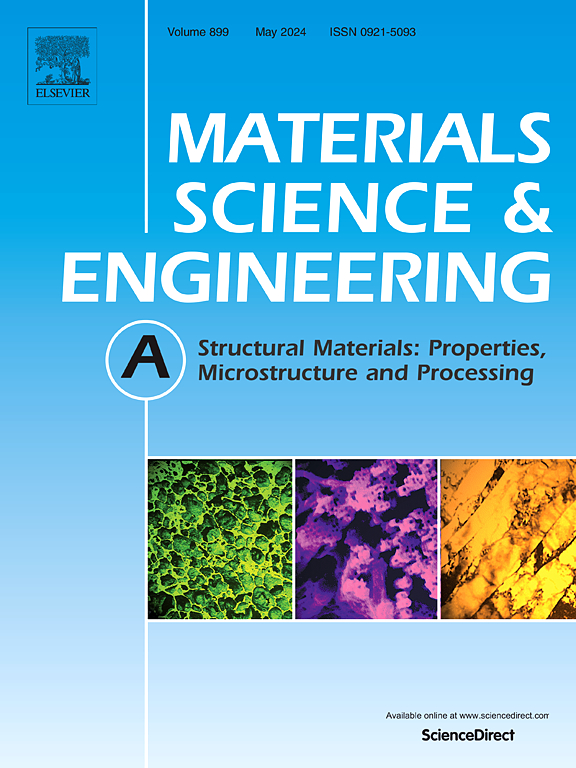Mechanism of segregation on the tensile and fracture behaviors of CuSn10P1 alloy
IF 6.1
2区 材料科学
Q1 MATERIALS SCIENCE, MULTIDISCIPLINARY
引用次数: 0
Abstract
The effects of segregation and δ-Cu41Sn11 on the strength and ductility of the CuSn10P1 alloys have been revealed. The hard and brittle δ-Cu41Sn11 prevents dislocations from passing through the interface and transfer of plastic slip between the matrix and the δ-Cu41Sn11. The plastic slip in the matrix is blocked completely near the interface, resulting in stress concentration. Because of Sn segregation, its solid solution strengthening effect in the dendrite stem and interdendritic region is different. The poor plastic deformation ability of the interdendritic region greatly hinders the movement of the dislocations, resulting in a deformation inhomogeneity between the dendrite stem and the interdendritic region. The stress concentration caused by the blocking effect of plastic slip and deformation inhomogeneity promotes the crack initiation and propagation, which are the fundamental reasons for the low strength and plasticity. The as-cast alloy has a strength and elongation of 305.3 MPa and 12.5 %, respectively. The heat treatment can effectively eliminate the segregation and δ-Cu41Sn11, improving the deformation uniformity between dendrite arms and interdendritic regions. During the tensile process, cracks are not prone to initiation and propagation. Consequently, both the strength and ductility of the alloy are enhanced. Holding at 600 °C for 1.0 h is a reasonable heat treatment process to improve the comprehensive properties of the alloy. The strength and elongation of the alloy heat-treated at 600 °C for 1.0 h reached 363.1 MPa and 32.7 %, respectively.
求助全文
约1分钟内获得全文
求助全文
来源期刊

Materials Science and Engineering: A
工程技术-材料科学:综合
CiteScore
11.50
自引率
15.60%
发文量
1811
审稿时长
31 days
期刊介绍:
Materials Science and Engineering A provides an international medium for the publication of theoretical and experimental studies related to the load-bearing capacity of materials as influenced by their basic properties, processing history, microstructure and operating environment. Appropriate submissions to Materials Science and Engineering A should include scientific and/or engineering factors which affect the microstructure - strength relationships of materials and report the changes to mechanical behavior.
 求助内容:
求助内容: 应助结果提醒方式:
应助结果提醒方式:


